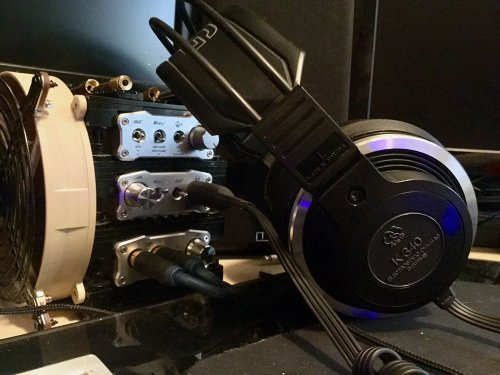The valve giant just got bigger… - part 4/5
Part 4: Analogue Volume Control
Many computer audio systems use a digital volume control which typically truncates the signal. The iTube2 precision analogue volume control system stays true to the source at all volume levels and it works in completely different manner than typical preamplifiers.

This circuitry has no active components at all. Although more expensive, this solution holds many advantages over more common applications. Linear presentation, less noise and cleaner sound are the most prominent ones. Usually the main issue is with relatively low input impedance, which translates to less full sound with some sources than expected. We’ve countered this problem by gain switch addition. If one misses body in music, flipping the iTube2 upside down and adjusting the ‘mice keys’ accordingly will make it appear again.
Audiophile Component quality
Inside the micro iTUBE 2,we’ve used Japan TDK C0G type capacitors, complimented by Japan Panasonic ECPU film capacitors explicitly designed for audio use with extremely low distortion (<0.00001% @ 1V/10kHz). Along with ELNA Silmic capacitors, Panasonic ECPU and MELF resistors, these parts are only found in components with an extra ‘0’ to the price. The proof is in the listening. Because of this no-compromise approach, the best tube buffer/pre-amp out there just pulled even further ahead. These ‘boutique’ components deliver the very best sonics.
 The Circuitry
The Circuitry
In comparison to its predecessor, iFi Audio iTube2 has drastically changed circuitry. This product is in fact a step-down from our Pro iCAN top-of-the-line amplifier and is directly coupled. No output coupling capacitor for the purest, most direct signal path. The actual circuit used is single-ended Class A.
 Part5: The power supply
Part5: The power supply
And finally, every iTube2 comes with super low-noise iPOWER (15v) which is a remarkably quiet, advanced DC power supply that features our proprietary Active Noise Cancellation+® drawn from military radar technology. This power supply’s topology is based on the 12-Element Output Array/6-Element Input Array. The outcome is stunning. Measured on the Audio Precision 2, the iPower has an astonishingly low audio band noise floor of just 1uV, while it has the ability to power the iTube2 to put out a maximum 7.75v which is quite remarkable.





























